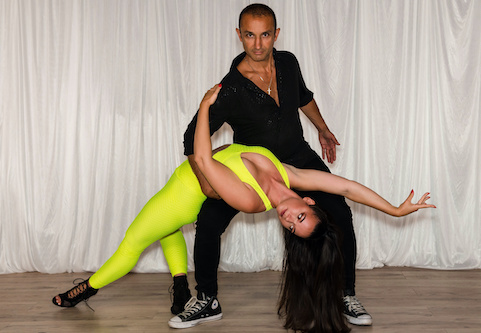The 4-Minute Rule for Dance San Francisco
Wiki Article
About Dance San Francisco
Table of Contents6 Simple Techniques For Dance San FranciscoSome Of Dance San FranciscoOur Dance San Francisco IdeasThe Buzz on Dance San Francisco
Dance kind Salsa training in Ecuador Salsa is a Latin dance, linked with the songs genre of the very same name, which was first promoted in the United States in the 1960s in New York City City. Salsa is a mixture of Cuban dances, such as mambo, pachanga, and rumba, in addition to American dancings such as swing and tap. The term "salsa" was created by Johnny Pacheco in the 1960s in New York, as an umbrella term for Cuban dancing songs being played in the city at the time. Salsa as a dancing arised soon after, being a combination of mambo (which was prominent in New york city in the 1950s) along with Latin dances such as Kid and Rumba in addition to American dancings such as swing and faucet - bay area salsa dancing.Salsa remains preferred internationally with enthnographic research right into salsa having been done as far as Benin, and Ghana. Salsa is a partnered dancing where the lead takes the follower via a series of spins and turn patterns to music.
The fundamental Salsa dance rhythm consists of taking three steps for every four beats of songs. Salsa dancers can additionally break apart to dance solo, known as "sparkles". The two primary designs of salsa are linear and circular.
Below, professional dancers circle around each other, evocative East Coast Swing. Both Cuban and Colombian salsa follow this round pattern. Including other dance designing techniques right into salsa dancing has come to be very typical for both guys and females: foot job, arm job, body language, rotates, body isolations, shoulder shimmies, rolls, also hand styling, balancings, and lifts.
Fascination About Dance San Francisco
Salsa dancing is a global dance that can be discovered in most city cities in the globe. Celebrations are held yearly, typically called a Salsa Congress, in various host cities intended to attract a range of salsa dancers from various other cities and nations. The occasions bring professional dancers with each other to share their interest for the dancing, develop neighborhood, and share relocations and pointers.address
Video clip showing salsa dancing fundamentals Over the years, several different styles of salsa dance have evolved around the globe. Integrating various other dancing designing techniques into salsa dance has also become common, with professional dancers of one design incorporating styles and activities of others to create brand-new fusions of dance designs.
It is a straight kind of salsa, where dancers dance in a slot, similar to LA design salsa - bay area salsa dancing. Unlike various other styles of salsa, however, New York design is danced on the 2nd beat of the songs (" on 2"), and the follower, not the leader, steps onward on the first action of the music
One of one of the most prominent figures in New york city style salsa is Eddie Torres. https://myanimelist.net/profile/dancesf (understood as "the Mambo King"), who is credited with aiding to define the on 2 salsa timing (based upon mambo) and helping to popularize it by educating it in dance studios in New York and through very early training tapes
9 Simple Techniques For Dance San Francisco
LA design salsa is danced in a line or "slot" with dancers exchanging settings throughout the dancing, unlike Cuban salsa which is danced in a more round style.In this pattern, the leader progressions on 1, tips to the exactly on 2-3 while turning 90 levels counter-clockwise (facing to the left), leaving the port open. The follower after that tips simple on 5-6 and turns on 78, while the leader makes one more 90 degrees counter-clockwise and slightly ahead, coming back into the slot.
The "Vazquez Brothers" (Luis Vazquez, Francisco Vazquez, and Johnny Vazquez) are credited for the very early advancement and growth of LA Design. Luiz Vazquez was the co-founder of Los Angeles's very first salsa dancing team, Salsa Brava.

Dance San Francisco Can Be Fun For Everyone
The name Casino is obtained from the Spanish term for the dance halls, "Casinos Deportivos" where much social dancing was done amongst the better-off, white Cubans throughout the mid-20th century and onward (bay area salsa dancing). Historically, Casino site traces its beginning as a partner dancing from Cuban Kid, Cha Cha Cha, Danzn and Guaracha
Report this wiki page